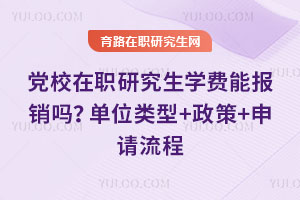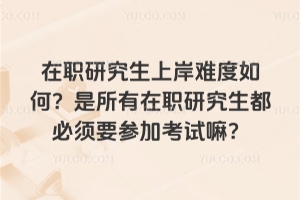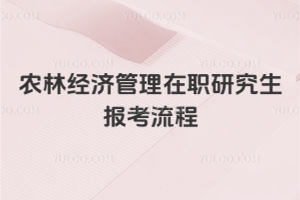- 微信公眾號

政策解讀
- 微信小程序

快速擇校

政策解讀

快速擇校
It is said that the public and Congressional concern about deceptive (欺騙性的) packaging rumpus (喧囂) started because Senator Hart discovered that the boxes of cereals consumed by him, Mrs. Hart, and their children were becoming higher and narrower, with a decline of net weight from 12 to 10-1/2 ounces, without any reduction in price. There were still twelve biscuits, but they had been reduced in size. Later, the Senator rightly complained of a store- bought pie in a handsomely illustrated box that pictured, in a single slice, almost as many cherries as there were in the whole pie. The manufacturer who increases the unit
price of his product by changing his package size to lower the quantity delivered can, without undue hardship, put his product into boxes, bags, and tins that will contain even 4-ounce, 8-ounce, one-pound, two-pound quantities of breakfast foods, cake mixes, etc. A study of drugstore (雜貨店) and supermarket shelves will convince any observer that all possible sizes and shapes of boxes, jars, bottles, and tins are in use at the same time, and, as the package journals show, week by week, there is never any hesitation in introducing a new size and shape of box or bottle when it aids in product differentiation. The producers of packaged products argue strongly against changing sizes of packages to contain even weights and volumes, but no one in the trade comments unfavorably on the huge costs incurred by endless changes of package sizes, materials, shape, art work, and net weights that are used for improving a product's market position.
When a packaging expert explained that he was able to multiply the price of hard sweets by 2.5, from $1 to $ 2.50 by changing to a fancy jar, or that he had made a 5-ounce bottle look as though it held 8 ounces, he was in effect telling the public that packaging can be a very expensive luxury. It evidently does come high, when an average family pays about $ 200 a year for bottles, cans, boxes, jars and other containers, most of which can't be used for anything but stuffing the garbage can.
1. What started the public and Congressional concern about deceptive packaging rumpus?
A. Consumers' complaints about the changes in package size.
B. Expensive packaging for poor quality products.
C. A senator's discovery of the tricks in packaging.
D. The rise in the unit price for many products.
2. The word "undue" (Line 2, Para. 2) means " ".
A. improper
C. unexpected
B. adequate
D. excessive
3. Consumers are concerned about the changes in package size, mainly because .
A. they hate to see any changes in things they are familiar with
B. the unit price for a product often rises as a result
C. they have to pay for the cost of changing package sizes
D. this entails an increase in the cost of packaging
4. According to this passage, various types of packaging come into existence to .
A. meet the needs of consumers
C. enhance the market position of products
B. suit all kinds of products
D. introduce new products
5. The author is critical mainly of .
A. dishonest packaging
B. inferior packaging
C. the changes in package size
D. exaggerated illustrations on packages
參考答案:CDBCA
特別聲明:①凡本網(wǎng)注明稿件來源為"原創(chuàng)"的,轉(zhuǎn)載必須注明"稿件來源:育路網(wǎng)",違者將依法追究責(zé)任;
②部分稿件來源于網(wǎng)絡(luò),如有侵權(quán),請聯(lián)系我們溝通解決。

黨校在職研究生學(xué)費(fèi)能報(bào)銷嗎?學(xué)費(fèi)報(bào)銷與否由單位政策決定,無全國統(tǒng)一標(biāo)準(zhǔn):黨政機(jī)關(guān)多按50%-100%報(bào)銷(需與工作相關(guān)),國企多定額補(bǔ)貼+比例報(bào)銷(30%-80...

陜西省委黨校在職研究生考試為自主命題、自主招生,陜西省委黨校在職研究生考試內(nèi)容分兩類:公共科目(政治理論,必考)+專業(yè)科目(專業(yè)基礎(chǔ)+實(shí)務(wù)應(yīng)用,按所選專業(yè)設(shè)定)...

在職研究生上岸難度因報(bào)考方式不同而有差異。非全日制研究生需參加全國統(tǒng)考,通過率約30%;同等學(xué)力申碩先入學(xué)后考試,通過率達(dá)60%-70%。藥學(xué)在職研究生備考方法...

農(nóng)林經(jīng)濟(jì)管理在職研究生介紹農(nóng)林經(jīng)濟(jì)管理在職研究生是培養(yǎng)具有農(nóng)林經(jīng)濟(jì)管理專業(yè)知識和實(shí)踐能力的高級人才。專業(yè)特色農(nóng)林經(jīng)濟(jì)管理

國際貿(mào)易學(xué)在職研究生就業(yè)方向主要包括外貿(mào)公司、跨境電商企業(yè)、政府部門、銀行金融機(jī)構(gòu)、跨國公司、國際物流公司、國際會展公司、咨詢公司、高等院校和科研院所等。這些領(lǐng)...

藥學(xué)在職研究生備考方法因報(bào)考類型不同而有所差異。同等學(xué)力申碩免試入學(xué),備考重點(diǎn)在課程學(xué)習(xí)和申碩考試;非全日制需要參加全國統(tǒng)考,備考重點(diǎn)在初試和復(fù)試。考生應(yīng)根據(jù)自...
在職研究生
入學(xué)考試
在職研究生
有用嗎
在職研究生
如何報(bào)考
在職研究生
報(bào)考流程
在職研究生
報(bào)名條件
在職研究生
學(xué)費(fèi)一覽表
在職研究生
考哪些科目
在職研究生
怎么報(bào)名
在職研究生
一年考幾次
評論0
“無需登錄,可直接評論...”